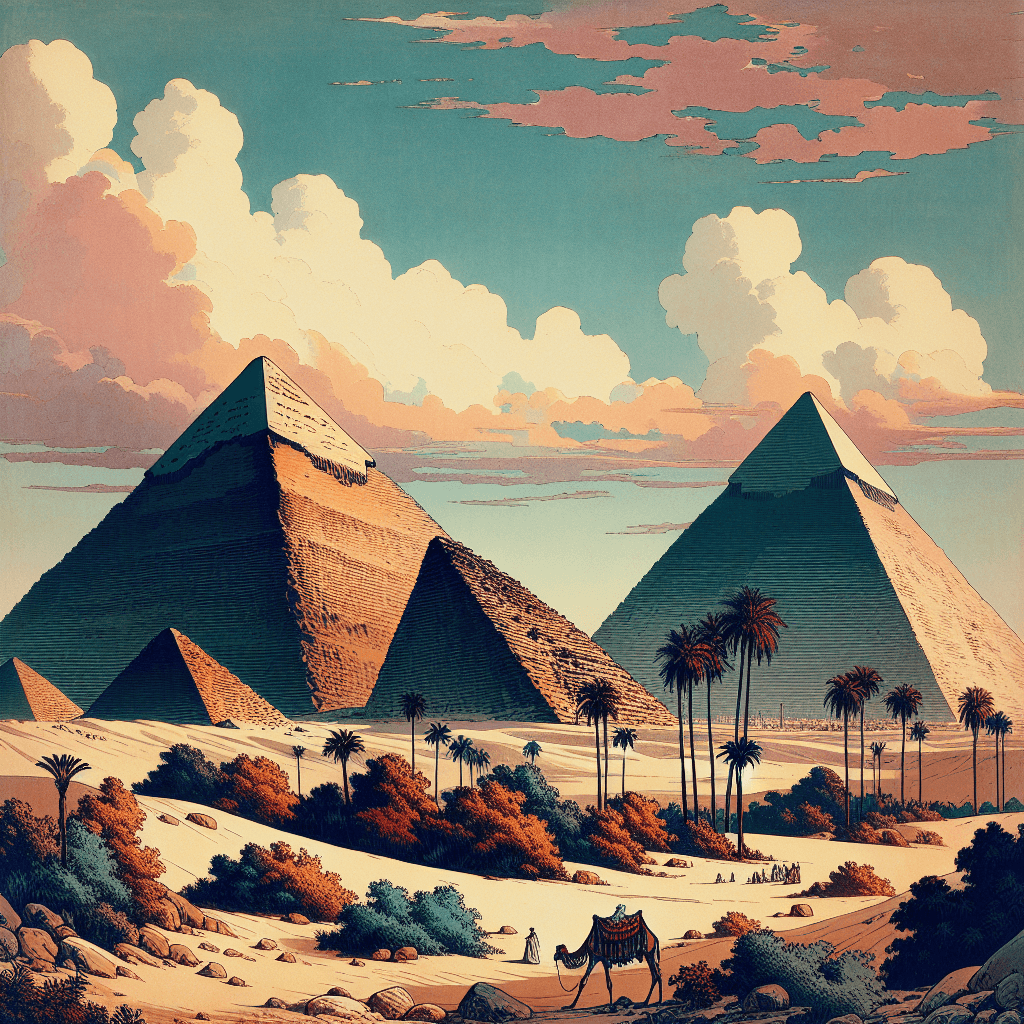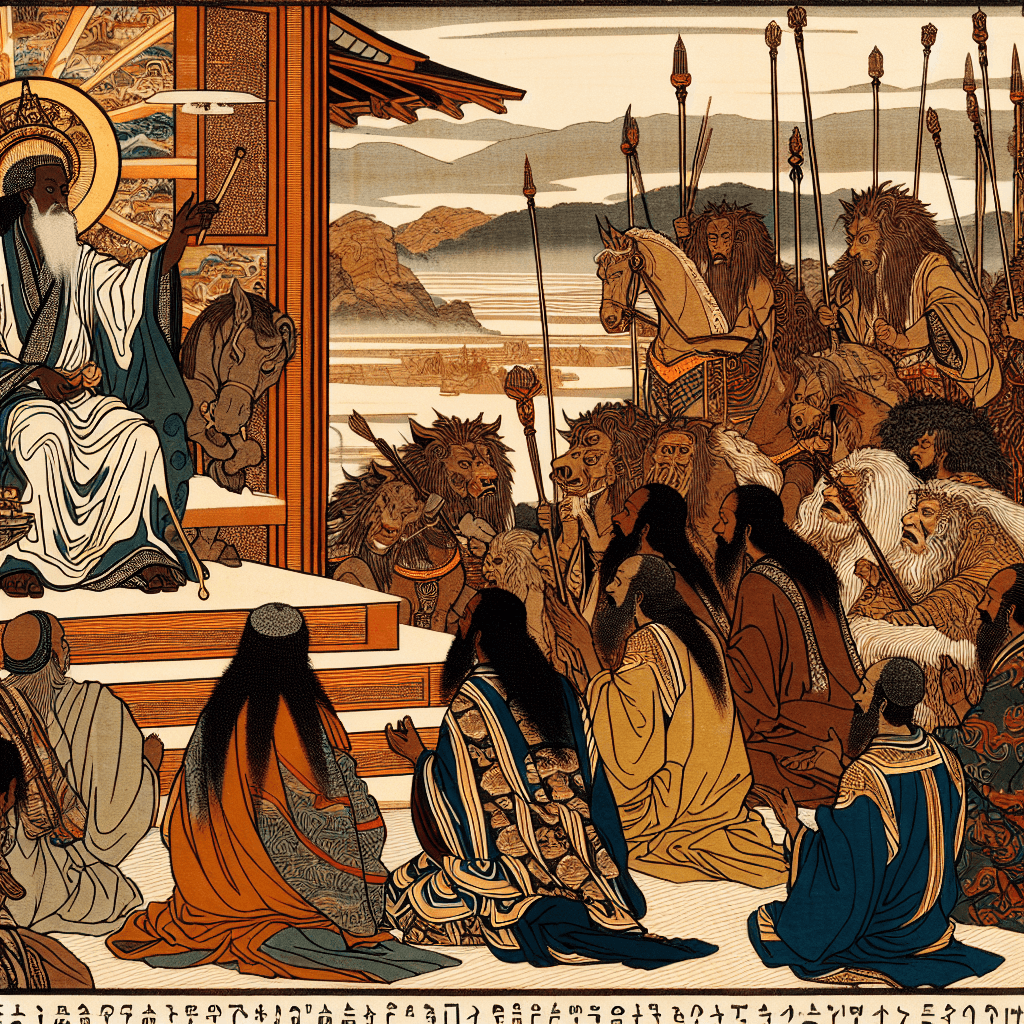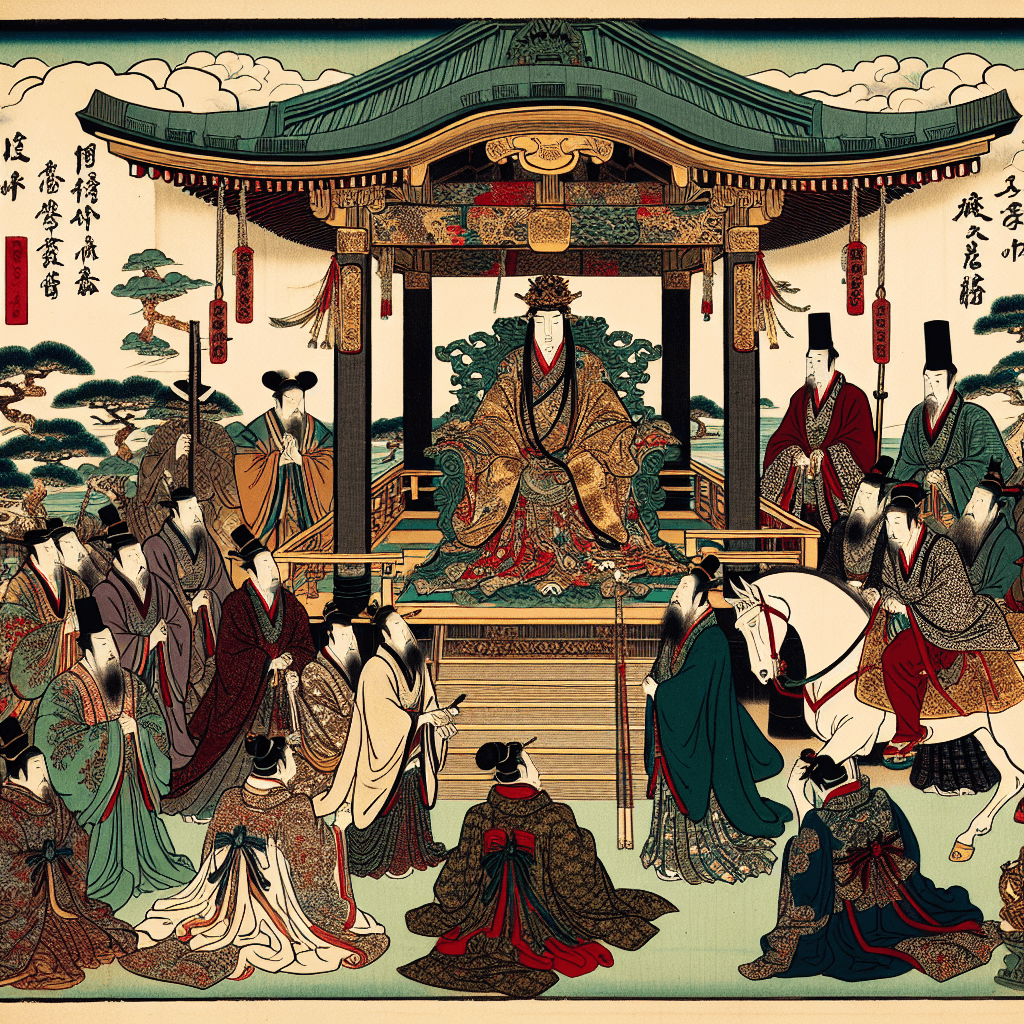Decoding the Grandeur: The Pyramids of Giza and their Enduring Legacy
syndu | Oct. 4, 2023, 12:14 a.m.

The Pyramids of Giza
Located on the outskirts of Cairo, The Pyramids of Giza are one of the most iconic and enduring symbols of ancient Egypt. Built during the Old Kingdom period, these monumental structures were constructed as tombs for the pharaohs and their consorts.
History:
The Pyramids of Giza were built over the span of three generations during the Fourth Dynasty by the pharaohs Khufu, Khafre, and Menkaure. The oldest and largest of the three pyramids is the Great Pyramid, built for Khufu (also known as Cheops). The Pyramid of Khafre is slightly smaller, and is notable for still retaining some of its original polished limestone casing at the top. The smallest of the three, the Pyramid of Menkaure, is one-third the height of its counterparts.
Architecture:
The Great Pyramid of Khufu is an engineering marvel. It was the tallest man-made structure in the world for over 3,800 years, with an original height of 481 feet (146.6 meters). It's estimated to consist of over 2.3 million blocks of stone, each weighing an average of 2.5 to 15 tons. The precision with which the pyramids were built, with such accurate alignment to the cardinal points, is a testament to the ancient Egyptians' architectural and astronomical knowledge.
"The pyramids were originally encased in white limestone, which would have made them shine brightly in the sun, making them visible from miles away. The interiors of the pyramids are just as impressive, with intricate tunnel systems, chambers, and galleries, designed to protect the pharaoh's body and his wealth in the afterlife."
Significance:
The Pyramids of Giza were not just tombs, but also served as a demonstration of the pharaoh's power and divine status. The construction of such monumental structures required a highly organized society with advanced knowledge in various fields.
The pyramids also had a religious significance. They were seen as a means for the pharaoh to ascend to the afterlife and join the gods. The Giza plateau itself was considered a sacred place, as it was believed to be a primeval mound where the earth was created.






